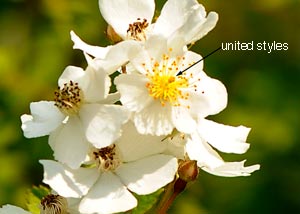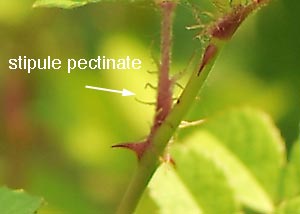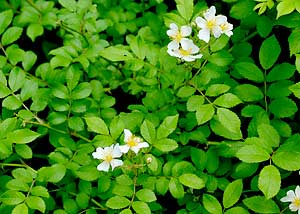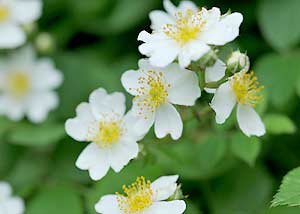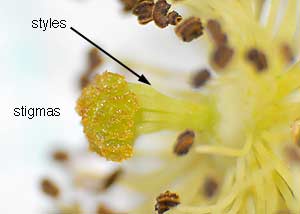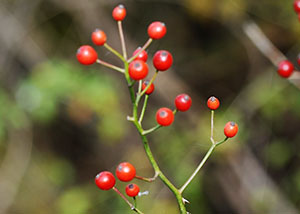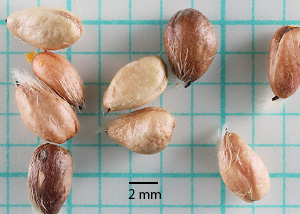
Date: XXXXXXX, 2011. Location: (map)
| Classification Hierarchy | |
| Kingdom | Plantae |
| Subkingdom | Tracheophyta |
| Superdivision | Spermatophyta |
| Division | Magnoliophyta |
| Class | Magnoliopsida |
| Subclass | Rosidae |
| Order | Rosales |
| Family | Rosaceae |
| Genus | Rosa |
| Species | Multiflora Rose |

Date: XXXXXXX, 2011. Location: (map)
USDA Plant Profile Flora of N. America
Scientific Name: Rosa multiflora (many flowered rose)
Common Name: Multiflora rose
Origin: Alien - rated in Iowa as a secondary noxious weed
Notes: R. multiflora was brought from Japan to the U.S. to be used as rootstock for grafts with less hardy roses. Later R. multiflora was used for erosion control but its ability to spread and form impenetrable thickets landed it on many lists of undesirable species. Birds like the fruits and spread the seeds. The plants reproduce asexually as well, both from roots, and from cane tips when they touch the soil. The species is versatile—it is a frequent hybridizer and grows successfully in many different habitats.
Additional references: 1, 2, 3, 4, 5, 6, 7, 8, 9, 10, 11, 12, 13, 14, 15, 16.
Flowers: May; usually white in this area but pink forms also occur; stigma appear as a tuft atop a short column of fused (connate) styles; flowers and fruits are grouped in terminal clusters; small red fruit (hips) are globular to pear shaped; sepals are deciduous before winter.
Leaves: compound and odd pinnate with 5 to 9 leaflets; stipules at the base of the petioles are fringed (fimbriate) with comb-like (pectinate) extensions and are sometimes glandular.
Stems: can be several meters long; young stems green or red; prickles broad at their base, narrowing toward the sharp tip and curving backwards; prickles often in pairs just below the nodes where leaf stipules attach to the stem.
Glossaries of botanical terms: 1, 2, 3, 4, 5, 6, 7, 8, 9, 10, 11.
